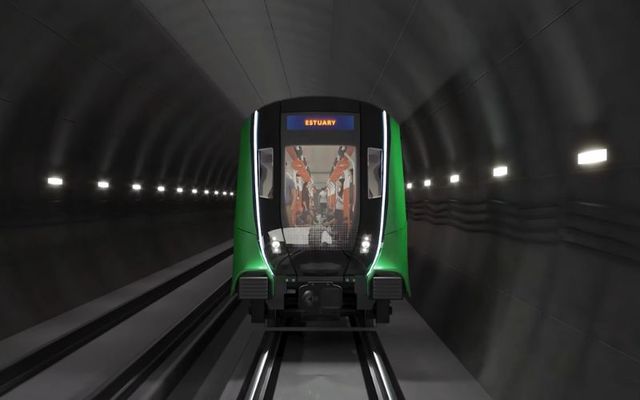Ireland's MetroLink is set to run 19.4 kilometers in length, mostly underground, across 16 stations connecting North and South city Dublin.
The MetroLink rail project has been given the go-ahead by Cabinet, Ireland's Minister for Transport Eamon Ryan confirmed on July 5.
“MetroLink is a transformative piece of new public transport infrastructure, the first of its kind in Ireland," the Department of Transport said on Tuesday.
"It will consist of a fully segregated railway, most of which will be underground, running from north of Swords to Charlemont in the south of Dublin City Centre.
“The route will include 16 stations and serve multiple residential communities such as Swords, Ballymun, and Glasnevin, as well as the City Centre, Dublin Airport, and major employment, education, transport, and other centres.
“When operations commence, there will be trains every three minutes during peak periods. This can rise to a service every 90 seconds by 2060 with the system capable of carrying up to 20,000 passengers per hour in each direction. For comparison, Luas Green Line can carry circa 9,000 passengers per direction per hour.”
The plans for Dublin's metro have been in development for roughly 20 years. Ireland is one of only a small number of countries in Europe without a metro in its biggest city or a rail connection to its main international airport.
Ireland’s National Development Plan (NDP) 2021-2030 specifically lists MetroLink as one of its strategic investment priorities and it is fully aligned with the Climate Action Plan 2021 and other major strategic plans.
Minister Ryan said on Tuesday: "MetroLink is a once-in-a-generation project that is going to massively transform the public transport system in our capital city.
"This project in various guises has been on the table now for two decades, but the government’s decision on the MetroLink Preliminary Business Case marks a significant milestone. Now, this exciting transport megaproject starts to become a reality. We are giving the green light to a transport system that will be integral to the city and the country’s sustainable development in this century, and into the next.
"MetroLink is hardwired to our climate ambitions. It will provide over 1 billion carbon neutral, fully electrified, passenger trips by 2050. Over 175,000 people and 250,000 jobs will be accessible to the stations by foot alone. By interchanging with other public transport systems such as DART and Luas, MetroLink connects to more than a million people in the Dublin area, and more across Ireland.
"The project will improve the quality of the urban environment and people’s lives, as well as enable the development of more well-connected homes in and around our capital city. It will contribute to a shift from the private car to more sustainable travel, helping to decarbonise the transport sector in line with government policy."
The Department of Transport’s statement noted: “While it is too early to give a precise project cost as it has yet to go through the planning and procurement stages, a central scenario provides an indicative capital delivery cost of €9.5 billion. This is the midpoint scenario of a credible, but still indicative, capital delivery cost range between €7.16 billion and €12.25 billion.
"Approximately three-quarters of the cost during the construction phase will be paid for by the exchequer and one quarter financed by a Public Private Partnership (PPP). A more exact cost will be known following planning permission and procurement process.
“The analysis clearly shows that MetroLink will deliver benefits to the Irish economy and society to the tune of €13.7 billion over 60 years, well in excess of expected project costs.”
Transport Infrastructure Ireland will submit a planning application for the MetroLink route to An Bord Pleanála in September, with the procurement process commencing in 2023. Dependent on the outcome of the planning and procurement processes, the construction of MetroLink is earmarked to commence in 2025 with a view to operation in the early 2030s.




Comments